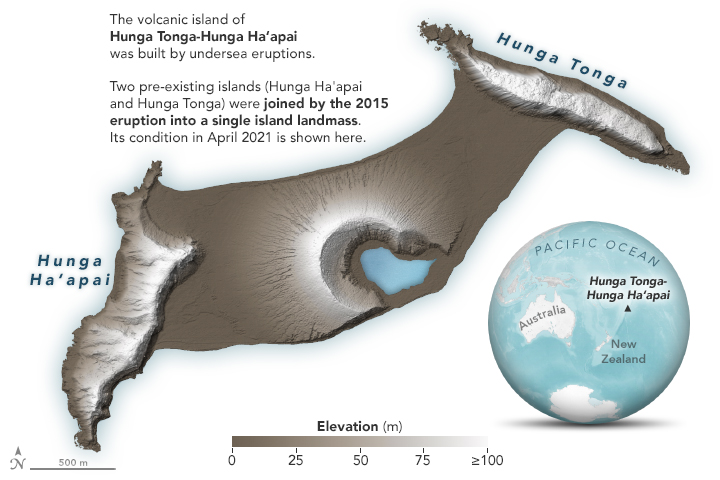A mapping effort led by @NASAGoddard's chief scientist shows how the explosive volcanic eruption at #Tonga's #HungaTongaHungaHaapai obliterated the island. go.nasa.gov/3rE8jo4 



“This is a preliminary estimate, but we think the amount of energy released by the eruption was equivalent to somewhere between 4 to 18 megatons of TNT,” said Jim Garvin. 🌋
For comparison, scientists estimate Mount St. Helens exploded in 1980 with 24 megatons and Krakatoa burst in 1883 with 200 megatons of energy. go.nasa.gov/3tRKk7t 

The eruption propelled volcanic material unusually high into the atmosphere—well into the stratosphere. The CALIPSO satellite measured volcanic material higher than it ever has before. go.nasa.gov/3KBV7bT 🛰️ 

Astronauts looking down from the International @Space_Station saw signs of the ash as well. 

Before the blast, various types of shrubs, grasses, insects, and birds made a home on the island. go.nasa.gov/3nPwyOY 



Scientists have been watching the island for years, partly because it offers a window into how surface waters may have once affected volcanic landforms on #Mars. “We actually see fields of similar-looking features on Mars in several regions,” said Garvin. go.nasa.gov/3Ix96Oj
• • •
Missing some Tweet in this thread? You can try to
force a refresh











